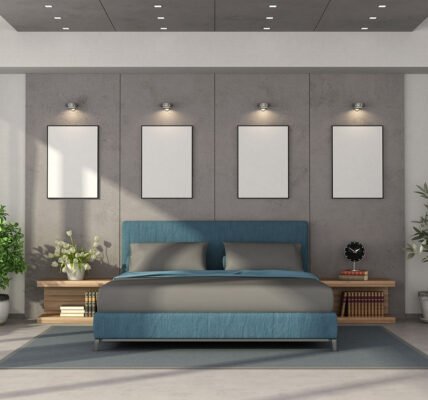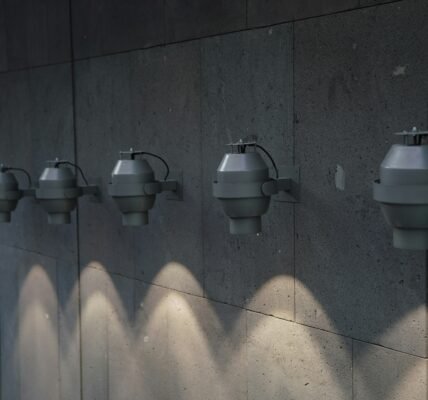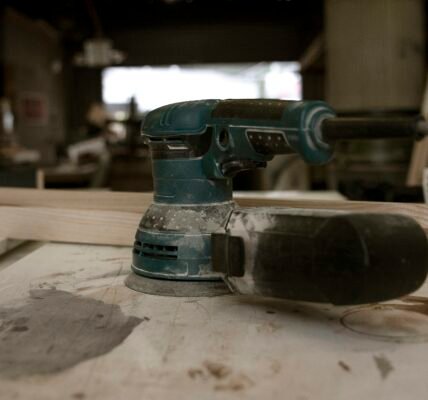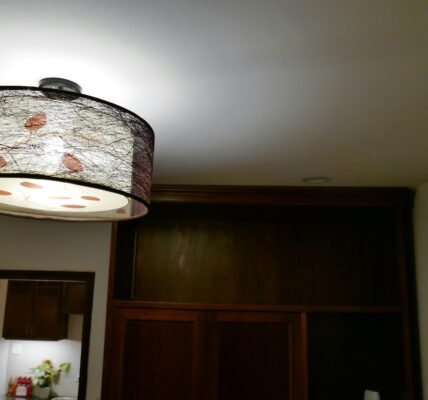Downlights, commonly referred to as recessed lights or can lights, are a popular choice for bedroom lighting due to their ability to provide focused illumination while remaining unobtrusive in the ceiling structure. These fixtures are installed into the ceiling and direct light downward, creating a seamless aesthetic that enhances the overall interior design of the space. The purpose of downlights is not only to provide general lighting but also to create ambient lighting, which can significantly affect the mood and functionality of a bedroom.
When considering downlights for a bedroom, it is essential to understand the different types available. LED downlights are increasingly favored due to their energy efficiency and long lifespan. They also provide excellent brightness levels while emitting minimal heat. In contrast, halogen downlights offer warmer light quality, which can be appealing for creating a cozy atmosphere. Meanwhile, fluorescent downlights are often more affordable upfront but tend to consume more energy over time, making them a less popular choice for sustainable lighting solutions.
One significant advantage of utilizing downlights in a bedroom setting is the ability to control the intensity of light effectively. By employing dimmer switches in conjunction with these fixtures, individuals can adjust the brightness to suit their particular needs, whether it be for reading, relaxing, or preparing for sleep. Additionally, downlights can be strategically installed to highlight specific areas or features in the room, such as artwork or architectural details, further enhancing the aesthetic appeal.
Ultimately, the integration of downlights into a bedroom can create a harmonious balance of light, improving both functionality and ambiance. Understanding the various options available is crucial in making informed decisions that align with personal style and practical requirements.
Calculating Room Size and Lighting Needs
When planning the lighting for a bedroom, the first step is to accurately calculate the room’s size. To determine the square footage of the bedroom, you need to measure its length and width, typically in feet. The formula to find the area is straightforward: multiply the length by the width. For example, a bedroom measuring 12 feet by 15 feet would have a total square footage of 180 square feet (12 x 15 = 180).
Once the square footage is established, the next step is to assess the lighting needs based on that area. A common guideline is to aim for approximately 10 to 20 lumens per square foot for general bedroom lighting. Therefore, for a bedroom of 180 square feet, you would require between 1,800 and 3,600 lumens in total. This range allows for variation based on personal preferences, the color scheme of the room, and the presence of natural light sources such as windows.
In addition to the lumens requirement, it is important to consider how natural light impacts the overall ambiance of the space. A brightly lit bedroom with ample natural light during the day may require fewer artificial light sources or downlights, while a room with minimal windows may necessitate a higher lumen output to avoid feeling dim or confined. Therefore, evaluating the bedroom’s exposure to sunlight throughout the day can inform decisions regarding the types and quantities of downlights required.
Taking into account the dimensions of the bedroom, the necessary luminance, and the effects of natural lighting, you can effectively calculate how many downlights are required to create a comfortable and functional living space. This approach not only ensures adequate illumination but also enhances the overall aesthetic appeal of the bedroom.
Recommended Lumen Levels for Bedrooms
When determining the appropriate lumen levels for bedroom lighting, it is crucial to consider the various activities that occur within this space, as well as the desired ambiance. Lumens are a measure of light output that can significantly impact mood and functionality. Typically, a general guideline suggests that bedrooms should have between 100 to 400 lumens per square meter, depending on the intended use of the area.
For creating a relaxed atmosphere, which is essential for unwinding and sleep preparation, aim towards the lower end of this spectrum. Approximately 100 to 150 lumens per square meter can provide a soft, comforting glow suitable for activities such as relaxation or light conversation. This could be achieved through the strategic placement of downlights, ensuring they emit a warm light that does not overpower the senses.
Conversely, when focusing on specific tasks like reading or working, a higher lumen level is required. For these activities, you should consider utilizing 300 to 400 lumens per square meter. Adequate illumination is vital in minimizing eye strain and enhancing concentration. In such cases, downlights placed above reading areas or desks can provide focused lighting that facilitates productive engagement.
Lastly, it is essential to recognize that mood lighting plays a significant role in bedrooms. Adjustable lighting solutions, such as dimmable downlights, allow for flexibility in lumen output. This flexibility accommodates various scenarios, such as bright illumination for chores or softer lighting for a calming retreat. Therefore, considering the different tasks and moods in your bedroom can significantly influence the number of downlights necessary to achieve optimal lumen levels while meeting individual preferences.
Spacing Your Downlights: A Key Consideration
When planning the installation of downlights in a bedroom, proper spacing is essential for achieving even illumination and creating an inviting atmosphere. The arrangement of downlights should enhance the room’s functionality while considering the various elements present in the space, including ceiling height and furniture layout.
One of the general guidelines for spacing downlights is to maintain a distance equal to one-half of the ceiling height from the wall. For example, if a bedroom has an 8-foot ceiling, downlights should be positioned approximately 4 feet apart from the walls. This spacing ensures that light is distributed adequately, minimizing shadows and dark areas while providing a warm and welcoming ambiance. However, it is crucial to adjust the spacing based on the specific layout and size of the room.
Moreover, the arrangement of furniture can significantly influence the placement of downlights. Consider the positions of beds, dressers, and nightstands when deciding where to install lighting. Downlights should be directed toward these key areas to provide adequate illumination for tasks such as reading or getting dressed. Additionally, avoid placing downlights directly above beds or seating areas, as this can create harsh lighting. Instead, plan for indirect lighting that reflects off walls or ceilings to create a softer glow.
Another aspect to consider is the beam angle of the downlights. A narrower beam angle will require closer placement of lights to provide adequate coverage, while wider angles can be spaced further apart. It is advisable to combine downlights with other forms of lighting, such as bedside lamps or ambient lighting, to enhance the overall illumination. By carefully considering these factors, one can create a balanced lighting scheme that complements both the design and functionality of the bedroom.
Choosing the Right Size and Style of Downlights
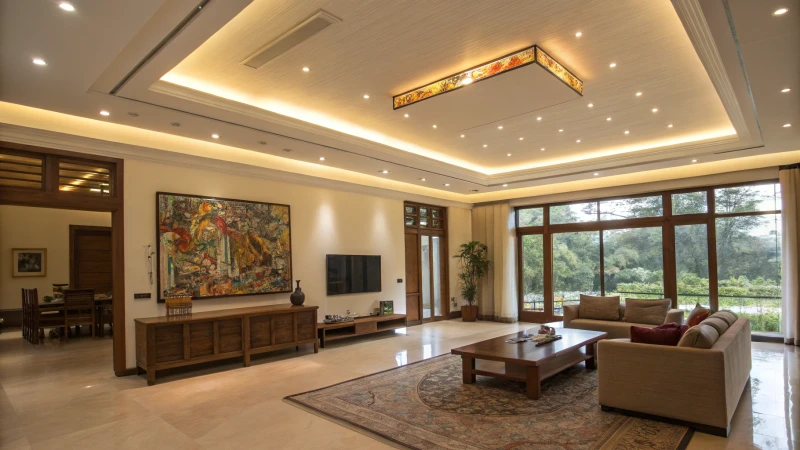
When selecting downlights for your bedroom, it is crucial to consider both size and style, as these elements significantly influence the overall aesthetics and functionality of the space. The size of the downlights should correspond to the dimensions of the room and the lighting needs. Generally, a larger room may benefit from larger downlights, which can provide sufficient brightness and coverage. On the other hand, smaller downlights can be effective in more intimate spaces without overwhelming the decor.
In terms of style, downlights come in various trim styles, which can enhance the decor of your bedroom. For instance, a sleek, minimalist trim suits contemporary designs, while ornate trims may complement traditional or vintage-style bedrooms. Additionally, the color and finish of the downlight trim—such as brushed nickel or matte black—can further enrich the room’s aesthetic.
The beam angle is another critical factor to consider when choosing downlights. A narrow beam angle focuses light on a specific area, making it ideal for highlighting artwork or particular features, while wider beam angles can spread luminescence across a larger area, ensuring even distribution of light. For most bedrooms, a medium beam angle is typically preferred, providing a balanced illumination that enhances the overall atmosphere.
Wattage also plays a vital role in determining the brightness of the downlights. It is essential to select a wattage that meets your needs without overpowering the room. In general, depending on the size of the bedroom, utilizing LED downlights with a lower wattage can provide ample illumination while being energy-efficient. Combining these elements will ensure that the downlights you choose not only complement your bedroom’s decor but also create an inviting and comfortable ambiance.
Utilizing Dimmers and Smart Controls
Incorporating dimmers and smart lighting controls into a bedroom with downlights offers numerous advantages, enhancing both the functionality and ambiance of the space. Dimmers allow users to adjust the light intensity, enabling a transition from bright, invigorating illumination to a softer, more calming environment. This flexibility is particularly beneficial in a bedroom, where varying light levels can cater to different activities, such as reading, relaxing, or preparing for sleep.
Moreover, smart lighting systems extend the benefits of traditional dimmers through automation and remote control. These systems can be programmed to adjust the brightness according to the time of day or personal preferences. For instance, one might set the lights to gradually dim in the evening, mimicking a natural sunset that fosters a peaceful atmosphere and encourages relaxation. Smart controls can also integrate with other home automation systems, creating a cohesive and convenient living experience. Homeowners can operate their downlights through smartphone applications or voice commands, adding an extra layer of ease when managing their bedroom’s lighting.
Additionally, utilizing dimmers and smart controls contributes to energy savings. By dimming lights when full brightness is not necessary, users can reduce electricity consumption, benefiting both the environment and their utility bills. This is particularly important in bedrooms as it can lead to significant cumulative savings over time. Furthermore, modern LED downlights are designed to be energy-efficient and compatible with dimming and smart control systems, making them an ideal choice for conscientious homeowners.
In summary, the integration of dimmers and smart lighting controls in a bedroom environment enhances flexibility in mood and ambiance, ensuring comfort while providing potential energy savings. The ability to tailor the lighting to suit various activities and preferences ultimately contributes to a more enjoyable and efficient living space.
Common Mistakes When Installing Downlights
Installing downlights in a bedroom can significantly enhance the ambiance and functionality of the space. However, several common mistakes often undermine the benefits of these fixtures, ultimately affecting the overall lighting quality and room aesthetics. One prevalent error is improper spacing between downlights. Many homeowners underestimate the importance of spacing, assuming that closer placement will yield brighter light. In reality, too close spacing can create harsh light spots and shadows, making the room feel uninviting. A general rule of thumb is to distribute downlights approximately 1.5 to 2 feet apart, which allows for a balanced and even distribution of light.
Another frequent mistake is selecting the wrong type of downlight. There are various downlight options available, including adjustable, fixed, and baffle styles. Each has a specific application that influences the direction and intensity of light. For instance, using fixed downlights in areas where adjustable ones would provide more flexibility can lead to inadequate lighting for tasks such as reading or dressing. It is essential to evaluate the room’s layout and the activities that will take place in the bedroom before making a selection.
Furthermore, neglecting to consider the impact of light colors can also result in less than satisfactory outcomes. Different light colors, such as warm white and cool white, evoke distinct moods and can affect how the space is perceived. Warm light tends to create a relaxing atmosphere, suitable for bedrooms, whereas cool light may energize the room but often feels harsh. Selecting the right color temperature is crucial for achieving the desired ambiance, thus enhancing the overall effectiveness of your downlighting. By being mindful of these common pitfalls, homeowners can create a well-lit, comfortable bedroom environment that meets their needs.
Maintenance and Replacement of Downlights
To ensure that downlights continue to function effectively over time, regular maintenance is essential. One of the first steps in maintaining downlights involves cleaning the fixtures. Dust and debris can accumulate on the lenses and inside the housing, which not only affects the brightness but can also cause overheating. It is advisable to turn off the power and use a soft cloth or microfiber duster to gently wipe down the fixtures. Additionally, inspect the downlights for any signs of wear or damage, which may necessitate repairs or replacements.
Another critical aspect of downlight maintenance involves checking the bulb types and their associated lifespan. Different bulbs, including LED, halogen, and incandescent, have varying life expectancies. LED downlights typically last longer than traditional incandescent models, often up to 25,000 hours compared to 1,000 hours for incandescent bulbs. It is prudent for homeowners to keep track of their bulb life and consider replacements when significant dimming occurs. Ensuring that bulbs are functioning at their best enhances energy efficiency and illuminates the space adequately.
When it comes to replacement, it is essential to choose bulbs that match the type and wattage specifications of your existing downlights. For downlights that utilize LED technology, selecting energy-efficient options can lead to significant savings on electricity bills. Moreover, if the fixtures themselves are damaged or outdated, consider replacing the entire downlight system. This not only improves performance but also allows for upgrades that can enhance both energy efficiency and aesthetic appeal. Proper maintenance and timely replacement of downlights contribute to a well-lit and efficient bedroom environment.
Conclusion: Achieving the Perfect Lighting Setup
Determining the appropriate number of downlights required for a bedroom is not merely a matter of filling the space with light. Rather, it involves careful planning and understanding of various factors that contribute to an ideal lighting environment. Throughout this discussion, we have explored key elements including room dimensions, ceiling height, and the purpose of the lighting. Each of these factors plays a crucial role in ensuring that the light is both functional and aesthetically pleasing.
One significant aspect to consider is the layout of the room and the placement of furniture. For instance, strategically positioning the downlights can enhance specific areas such as reading nooks or workspaces. It is also important to consider the overall ambiance that you wish to create; softer lighting may be more suitable for relaxation, while brighter illumination can be beneficial for tasks such as reading or working. The choice of light color temperature is another factor that can affect the mood and utility of the space.
Additionally, utilizing a dimming system can provide versatility, allowing you to adjust the brightness according to the time of day or activity. It is advisable to calculate the total wattage needed based on the size of the bedroom, which further influences the number of downlights required. A general guideline can serve as a starting point, but personal preference and specific room characteristics will ultimately dictate the final selection.
In conclusion, achieving the perfect lighting setup in a bedroom involves a thoughtful approach to downlight arrangement and selection. By considering all these aspects and taking the time to design an intentional lighting plan, you can create a space that is not only functional but also enhances the comfort and appeal of your bedroom environment.
